Erin is Puting Bermuda on Watch
Today's BMS Tropical update will build upon the ideas outlined in yesterday's BMS Tropical Update on the future track and intensity of Tropical Storm Erin. But first, let's discuss a topic that may also interest the broader insurance industry, given that Typhoon Padul made landfall on Taiwan as a Category 2 hurricane over the last 24 hours. It is now forecast to make landfall along Fujian Province, which will add to the impacts, affecting approximately 43 million people within its path. In general, insurance impacts from Padul will likely be low, illustrating the potential protection gap that exists in other parts of the world. In general, the West Pacific Basin has been average in most metrics. Still, the basin has yet to have a major hurricane, which has likely resulted in a lower Accumulated Cyclone Energy (ACE) for the season to date.
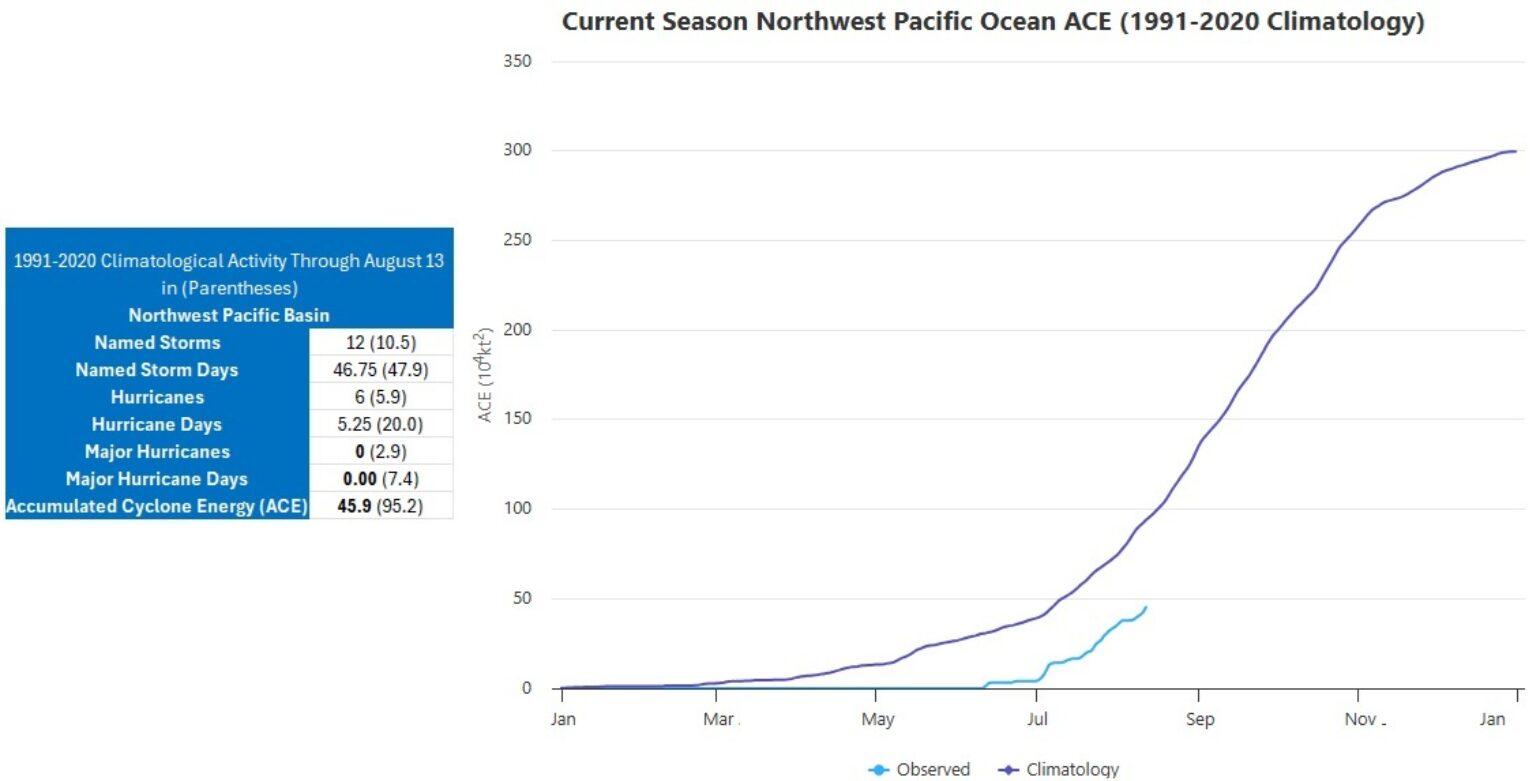
Now, even though there are other activities around the world, most of the insurance industry's attention is turned to Tropical Storm Erin, which continues to track along the central Main Development Region (MDR) of the Atlantic Ocean at a robust 17 mph, which is relatively fast for a tropical storm. Typically, the average forward speed of a tropical storm in the Atlantic is around 10 – 12 mph. There has been no change in the last 24 hours, except that Erin has moved into better atmospheric conditions and warmer water, as we discussed yesterday. As Erin moves further west, it will outrun the dry and move over some of the warmest waters in the Atlantic Basin, especially off the Southeast Coast of the U.S. This overall better environment has allowed for deeper convection to resume on Erin’s south and west sides. Model intensity guidance is very consistent for the most part in developing a hurricane by Friday and a major by the weekend. There is still a very good chance Erin will track close to the insurance hub Bermuda by Wednesday, August 20. As a result, Erin will be a long-tracked named storm that will contribute to the overall seasonal activity over the next eight days, likely leading to an above-normal season by the time Erin dissipates.
In-depth look at Erin’s forecast track
Yesterday, the tropical update noted that since Erin will be a long-tracking hurricane, it will serve as a comprehensive test of the skill of the hundreds of forecasts available to the insurance industry. As discussed, typical for long-range forecasting, it is best to use an ensemble-based forecast. More specific hurricane models are best used for short-term forecasts as they are at a finer resolution and can handle some of the atmospheric physics better. These BMS Tropical Updates tend to be a bit harsh on the American GFS model, and for good reason, as it often adds to the overall forecast uncertainty.
Below is the overall track guidance trend from the University of Albany and Brian Tang, which is a great website for tracking the skill of tropical cyclone track and intensity forecasts. The plots below are for the last six forecasts of the American GFS Ensemble forecast, which show considerable spread on a 5-day forecast. The lower plot shows the trusted ECMWF forecast, indicating significantly less spread and a more consistent track for the 5-day forecast. This results in a narrower overall ensemble range, which increases confidence in the forecast's accuracy over the next five days. Of course, the National Hurricane Center (NHC) has its 5-day Cone of Uncertainty forecast. It is likely the best forecast to follow for a 5-day forecast as the forecasters there are the best in the business and are a true asset to NOAA and the insurance industry.
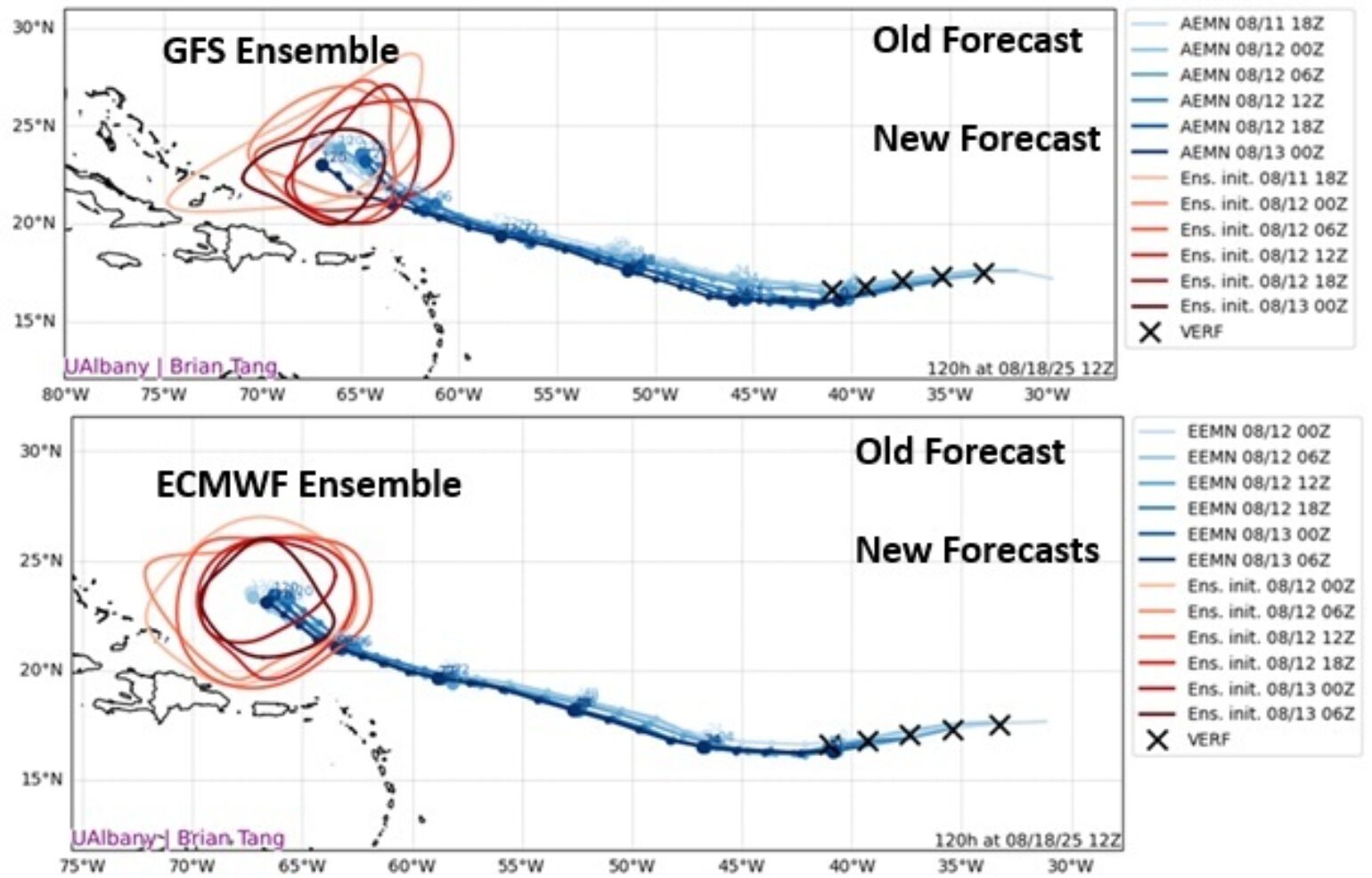
Yesterday we also discussed how using the super ensemble product by Tomer Burg at the University of Oklahoma can also provide helpful information. One can also view the trend in these extra-long range forecasts, which show in the short term Erin is tracking a bit further south than what was originally expected, resulting in an overall shift westward in the long-range forecast - with Erin now tracking west of Bermuda compared to earlier estimates. The newer forecasts are a darker color (purple), and the older forecasts are a lighter color (yellow)
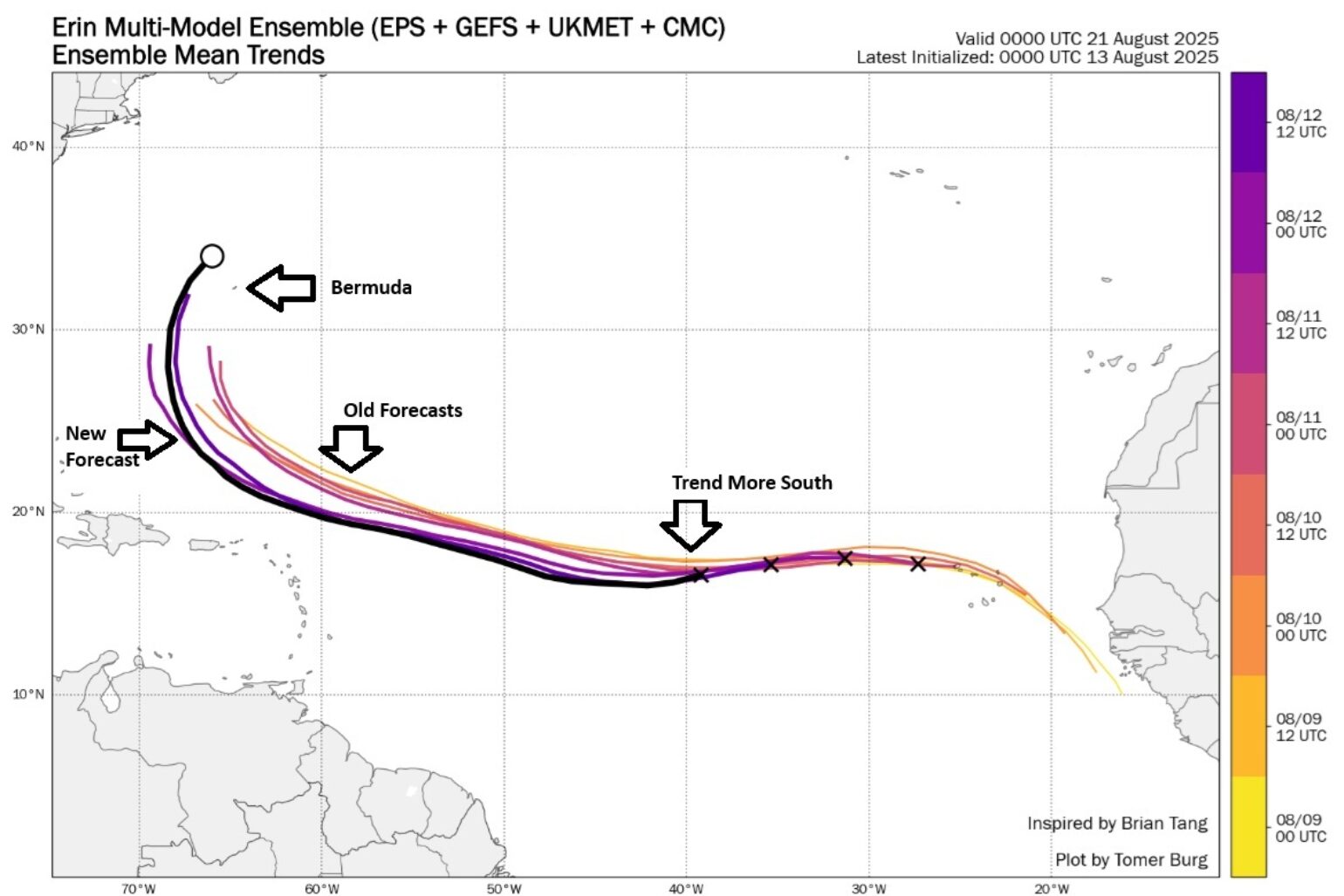
Today, the overall super ensemble indicates that only two of the 103 different forecasts have some impact on the U.S. (1.94%), with most members now showing an out to sea (OTS) solution for Erin in the long range. The ECMWF ensemble mean takes Erin well west of Bermuda, while the American GFS is much closer to Bermuda, but remember the caveats above about the American GFS model.
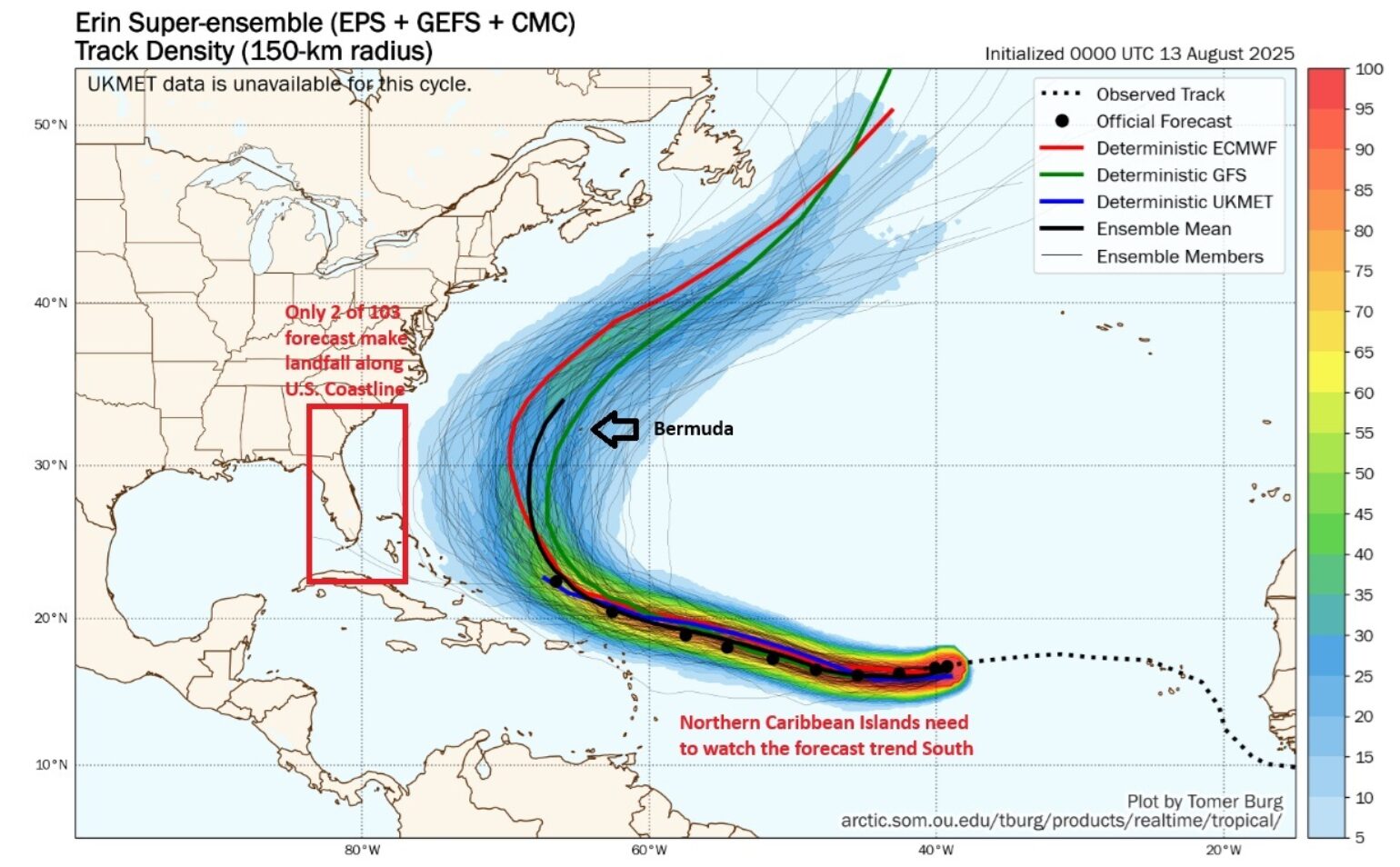
Overall, it looks like the insurance industry likely won’t see any impacts from Erin. Fortunately, the long-range large-scale steering setup for Erin creates a significant weakness in the subtropical ridge off the East Coast that is allowing Erin to turn north. This seems unavoidable and has been remarkably consistent for days now. If this weakness in the ridge weren’t there, Erin would have a direct path to the U.S. coastline.
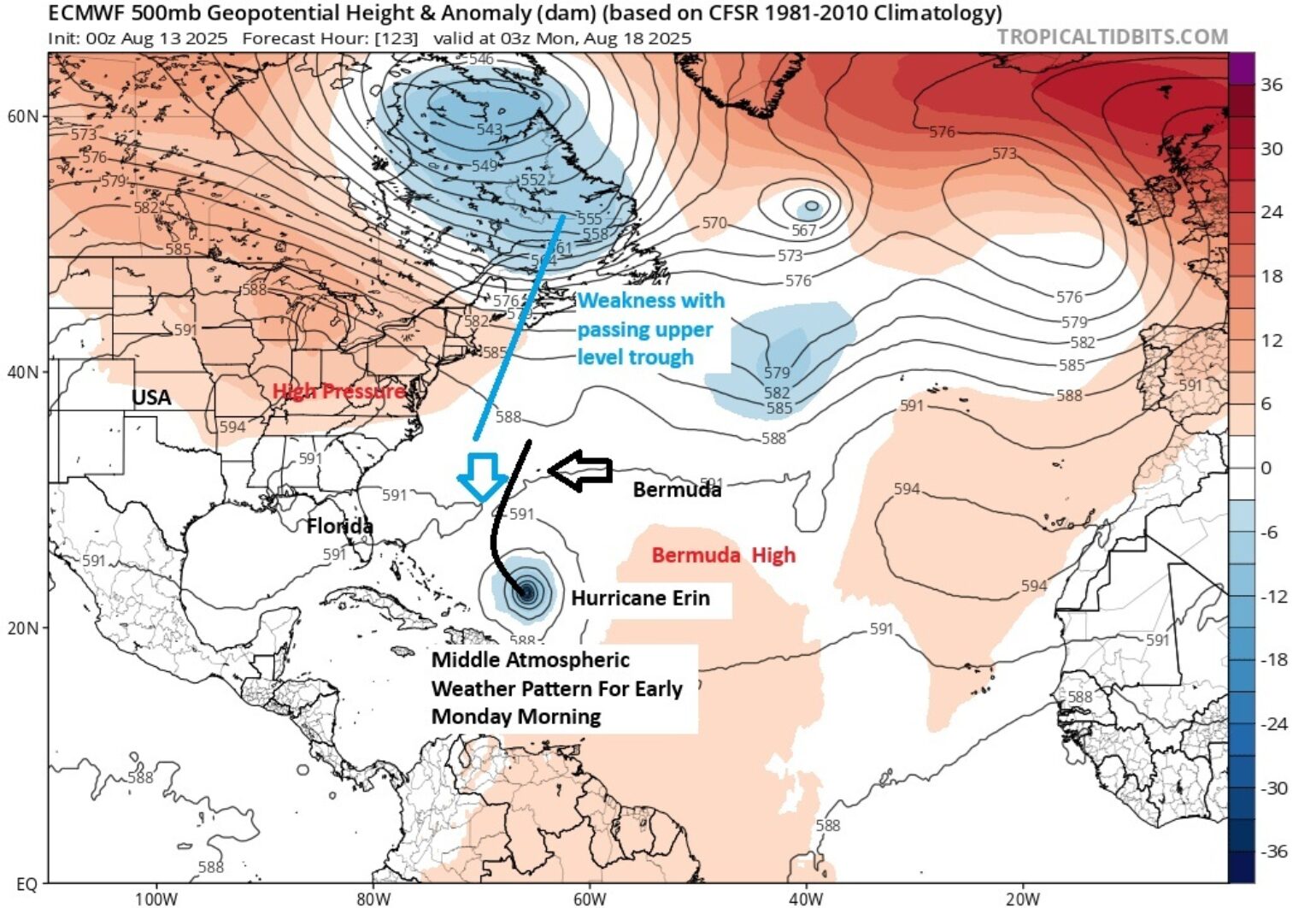
Erin’s future intensity forecast
The intensity forecast depends on many factors, as usual. Erin is outrunning the dry dusty air and will move over very warm water. This will allow Erin to strengthen into the Atlantic Basin's first hurricane and major hurricane, and one can’t rule out that Erin might even reach a Category 4 hurricane briefly during its life cycle over the next week. So although Erin might look weak with limited convection, Erin will become a mature hurricane by this weekend as it approaches Bermuda later next week.
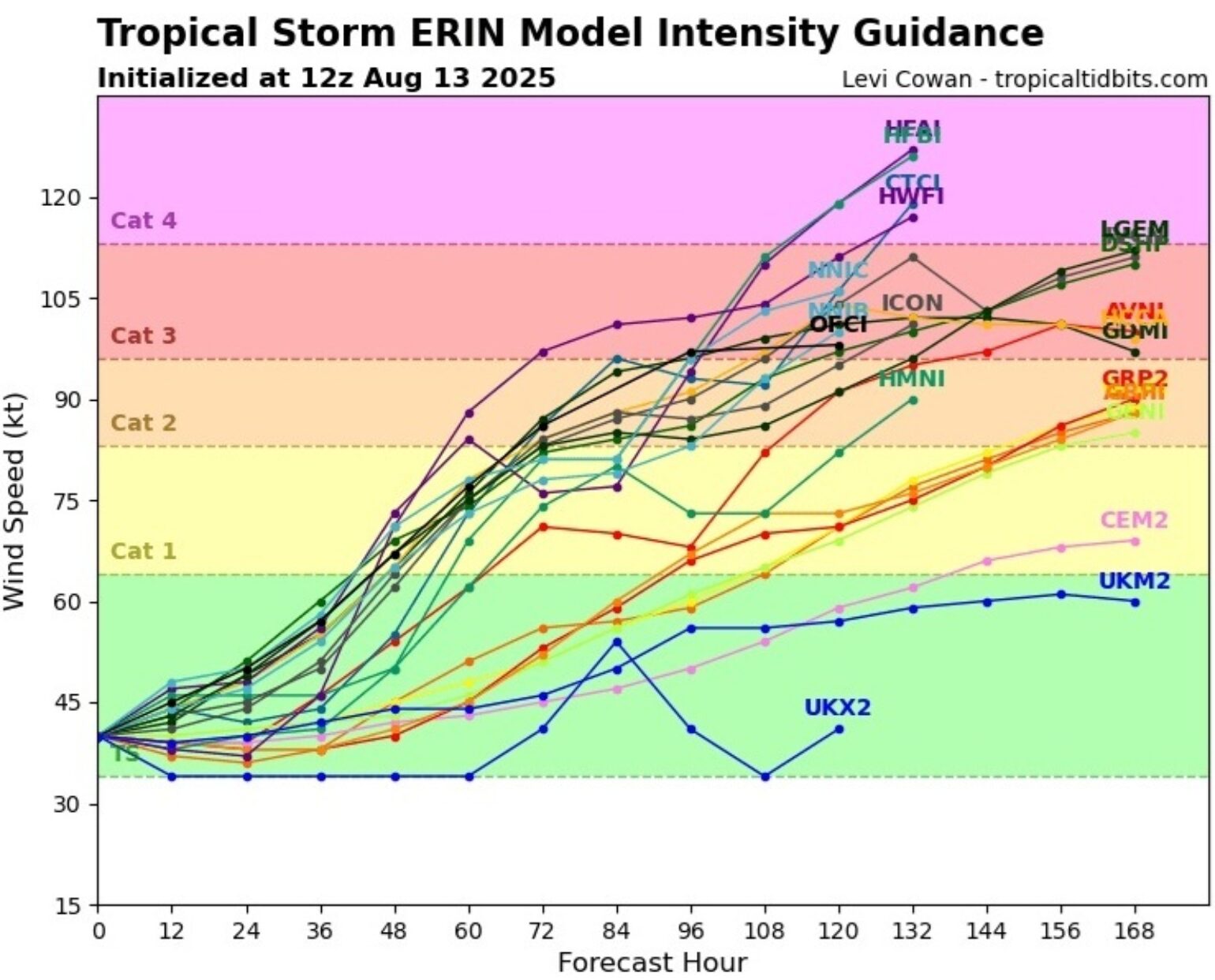
Key messages for Erin
The key messages are that the Caribbean should monitor any further shift in track to the south, as this could result in minor impacts to the northern islands like the U.S. Virgin Islands. At this time, the Bahamas and Southeastern U.S. still need to monitor Erin for any changes. Still, right now, overall landfall and bypassing impacts seem to be off the table, with rough surf being the only expected impact. Bermuda needs to pay close attention, but overall, Erin should track just to the west of the Island. We are still discussing long-range forecasts, and the uncertainty can be high. However, there is nothing in the overall weather pattern that appears to complicate the long-term steering flow of Erin's future track and the expected increase in intensity in the long-range forecast.
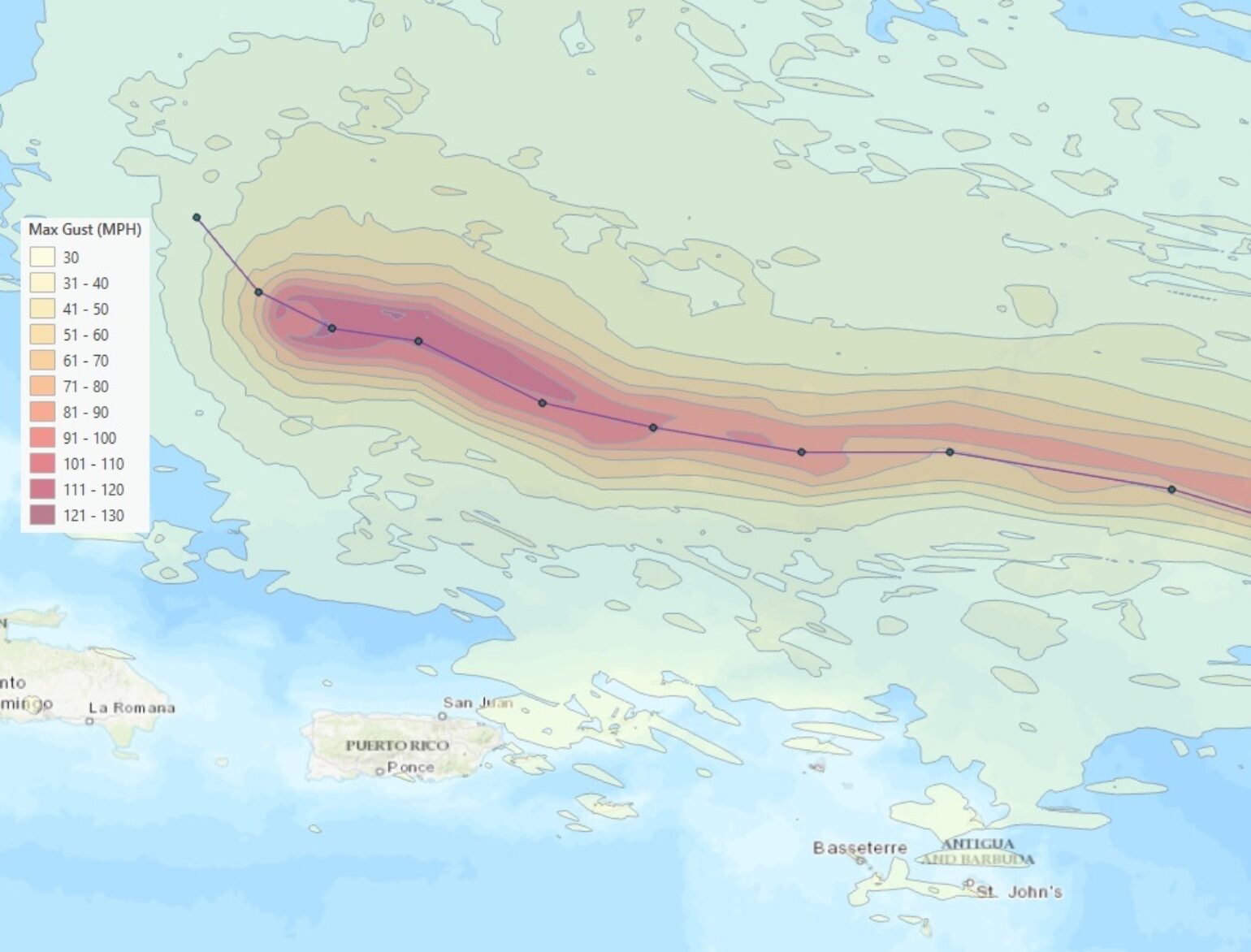
Above is the latest BMS Verisk Respond Max 3-second wind gust, showing limited impacts at this time to the Caribbean islands. However, any further shift in Erin's track needs to be closely monitored, as stronger wind gusts could approach the Islands.
These BMS Tropical Updates will be updated as needed to provide the insurance industry with helpful information on potential impacts.
